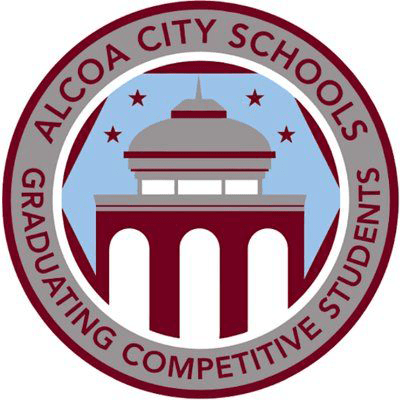
Response to Intervention (RTI) has been around for a while, is widely recognized, and is even mandated in some states—still, not every district's implementation is created equal.
For students in need of intervention, challenges can pile up fast and leave them feeling lost, frustrated, and defeated. Intervention teams face a long journey to increase student confidence and knowledge to get them back to grade level. How do districts make it work against the odds of teacher shortages, shrinking building space, and dwindling budgets? With a hat-tip to the three tiers of RTI, let's explore the inner workings of three districts doing an exceptional job with their intervention programs.
Alcoa City Schools, Tennessee
Target specific deficits.At Alcoa City Schools in Tennessee, RTI is never one-size fits all. The district's personalized approach begins with the use of multiple measures to determine whether a student is in need of intervention.
"We refuse to use a single metric or measurement," explains Dr. John Campbell, director of curriculum and instruction. Educators at Alcoa consider students' classroom experiences, listen to teacher experiences, and ask for feedback. Alcoa Intermediate School instructional and intervention coach Amber Harper adds that students receive universal screening, then additional screening.
Over the years, Alcoa has used these screening tools to improve targeted intervention for students, rather than settling for a general RTI program. If a student is in need of intervention, it's tailored to their specific deficit area. This is particularly true for Alcoa's youngest learners.
"If we have 15 kids in kindergarten who are having trouble with reading, there's no one answer or intervention," says Dr. Campbell. "We need to individualize as much as possible."
Of course, intervention looks different for older students. Alcoa uses methods ranging from small group instruction to nationwide programs, each based on research proving efficacy. One of the immediate benefits Harper notes is an increase in student confidence using more comfortable small-group settings.
Once students feel more successful, they can apply their newfound knowledge easier in the classroom. In fact, Alcoa's intervention team is committed to moving kids back into their classrooms, on track for grade-level learning and no longer in need of intervention. At least twice a month (more often at the beginning of the year), staff meet to check in and take detailed notes. Solid data team meetings result in rich conversations about student progress.
One of the RTI pitfalls the team at Alcoa has worked hard to avoid is the mistaken notion that RTI is simply a procedure to identify students in need of special education. Instead, everyone stays focused on filling gaps for each individual student's deficits. Among grades 3–5, this unique approach resulted in creative scheduling solutions, with administrators sometimes giving up their offices to accommodate intervention periods.
"There's no territorialism," says Dr. Campbell. "There are no limitations, and everyone pitches in, which allows us to individualize and offer as many groups as possible based on student needs and physical space. It can get complicated! But it's all hands on deck."
Dr. Campbell and Amber Harper offer these words of wisdom to districts looking to improve their RTI implementation:
- Make sure everyone has the right perspective: RTI is a strategic support, not a mechanism to identify students in need of special education (even if students need scaffolding for years).
- Be patient—it takes a while to get grounded.
- Measure your effectiveness carefully and change what needs to be changed.
- Constructively critique what you've done—there's always room for improvement.
- Commit to the value of the program with leadership, personnel, and scheduling.
Walled Lake Consolidated Schools, Michigan
Vision, meet efficiency.Imagine 19 different schools, each with its own way of keeping intervention records, coming together to discuss RTI. Mark Hess, executive director of instruction, technology, and assessment for Walled Lake Consolidated Schools in Michigan, used to attend principal meetings to puzzle through data from 19 different network files, Google spreadsheets, even paper records. Something had to change.
Moving all the district's RTI reporting into a single system created a new standard of efficiency and reduced the time needed to create and monitor an intervention plan. Teachers in Walled Lake could access the data they needed in real time, and if a student changed schools, the student's RTI information was available to his or her new teacher.
Consolidating RTI data also standardized the vocabulary Walled Lake staff uses when referring to interventions. With this change, everyone speaks the same language about RTI—terms like formative assessment, balanced assessment system, feedback, and so on, are all consistent across the district.
Laying this foundation helped unify the district under a common vision for RTI success, which Hess continues to emphasize with his team during monthly meetings. Principals come together to discuss RTI, MTSS, tier one, and tier two support. Quick diagnostic tools provide a consistent stream of data.
"We used to wait until the end of the semester or marking period," Hess explains. "Now we monitor data in real time and adjust every two weeks."
Focusing on individual student gains instead of raising test scores is key to Walled Lake's vision for their RTI program. Hess explains how access to good data has shifted analysis to a granular level, which humanizes the RTI process.
"We want kids to do well," he says. "We look at it through the lens of a student, not school improvement."
Above all, Walled Lake staff look at RTI as a journey, not a quick fix. Frequent conversations between administrators and teachers center around the very root of RTI: moving kids along who are struggling.
"If you can find that system and keep moving kids along, everything falls into place," says Hess. "Nothing is more rewarding to teachers than watching students on RTI plans grow. It validates all the hard work and is a good feeling."
Mark Hess gave these tips for districts looking to improve RTI:
- Expect roadblocks, because they will happen.
- Continue to have conversations about your vision with stakeholders (teachers, principals, office staff, instructional coaches, and parents).
- Be willing to reach out to parents, because they want to help their struggling children, too.
- Avoid placing heavy paperwork requirements on teachers—instead, choose a good technology system for data input, storage, and recordkeeping.
- Involve everyone and leverage technology to create efficiencies.
Clint ISD, Texas
Proactive and positive.Principal Lorraine Vidales and her team at Ricardo Estrada Middle School have adopted an RTI mantra: Don't wait for students to fail.
"We're proactive, not reactive," Vidales explains. "We don't want to wait until we're close to STAAR [State of Texas Assessment of Academic Readiness]. We want a targeted intervention."
Their proactive RTI approach began with comprehensive teacher training about the three tiers of RTI—grade-level students, targeted intervention, and intensive intervention—and what to do to serve students in each area. Every three weeks, teachers study progress reports to identify students whose grades may be slipping or who have had discipline referrals. The RTI team intervenes right away, with administrators and teachers working together to come up with strategies.
"If we see changes, we immediately act. We conference with a parent and set up a support plan," Vidales says.
Every nine weeks, an afternoon is dedicated to the Falcon Academy. Schedules are modified to accommodate a data-driven, prescriptive intervention program in the afternoon for targeted and intensive intervention. Students who are not in an intervention program take part in Character Education and hear from guest speakers for enrichment.
REMS is unique, since recently their student population has shifted from a junior high school to a middle school. Adding sixth graders created a learning curve. Teachers needed to get to know the incoming kids well in order to identify intervention needs very different from those of ninth graders. The first year, Professional Learning Committee (PLC) meetings helped the team talk about kids, content, and data to identify struggles.
This year, teachers are driving the conversation about interventions for students, Vidales says. They're the ones coming up with ideas and strategies, and they know what the kids need.
"I'm just getting out of their way, giving them what they need, and making schedules," laughs Vidales.
Strategies extend beyond academics into behavior as well. REMS uses positive behavior intervention and support system (PBIS). Each staff member has a PBIS app where they can reward students for positive interactions they witness, such as showing respect, being responsible, and sharing Falcon pride. Students can then log in to see their reward balance and visit the Falcon Nest store to cash in for treats, free dress passes which allow them to wear street clothes instead of a uniform for the day, and tickets to school dances or events. PBIS works well as part of a proactive approach to intervention.
"We are part of a community with a lower socio-economic status," Vidales explains. "Being able to use PBIS points to attend school dances and events is a great motivator."
For districts looking to implement or improve RTI, Lorraine Vidales shares the following suggestions.
- Educate teachers—some may think RTI is just paperwork piled on top of other responsibilities.
- Demonstrate how much RTI overlaps with what teachers are already doing.
- Depend on head teachers to present strategies, which will increase buy-in.
- Don't wait—start to intervene as soon as grades or behavior slip.
- Get to know students' needs on an individual basis.
The Kids are the Winners
RTI provides a framework for tracking and recording the goals and progress students are working toward. These districts are making a difference by devoting ample time to identifying the right supports and scaffolding for each student's unique needs. By investing in students on a personal level, schools increase their odds for improvement. Plus, making intervention into a positive experience for students has a strong impact on motivation and engagement.These are just three examples of the difference a strong RTI implementation can make for students. How are you making a difference with your intervention team?
Follow-Up Resources: Social-Emotional Learning
RTI data tells many stories about student learning—including how SEL skills are developing. Learn 5 Ways to Track SEL Efforts.WHAT'S NEXT FOR YOUR EDTECH? The right combo of tools & support retains staff and serves students better. We'd love to help. Visit skyward.com/get-started to learn more.

|
Erin Werra Blogger, Researcher, and Edvocate |
Erin Werra is a content writer and strategist at Skyward’s Advancing K12 blog. Her writing about K12 edtech, data, security, social-emotional learning, and leadership has appeared in THE Journal, District Administration, eSchool News, and more. She enjoys puzzling over details to make K12 edtech info accessible for all. Outside of edtech, she’s waxing poetic about motherhood, personality traits, and self-growth.




